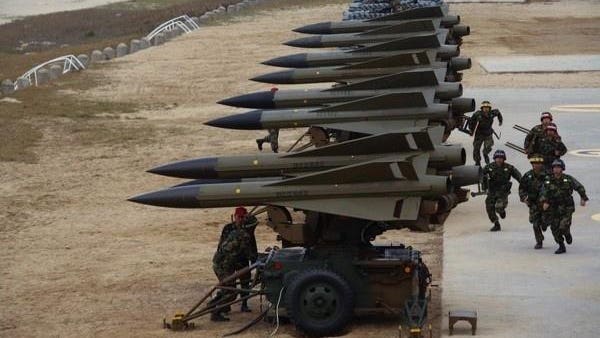The American-made HAWK surface-to-air missile system is more than 60 years old. But if reports are true, it’s about to become Ukraine’s main SAM. The backbone of the country’s air-defense network .
It’s not a terrible outcome for Kyiv. The 1960s-vintage Raytheon MIM-23 Homing All-the-Way Killer is simple, reliable, highly-mobile, easy to upgrade and works just fine against slower drones, cruise missiles and manned aircraft. As a bonus, the HAWK could be compatible with another, more modern SAM system that Ukraine uses: the U.
S. -Norwegian National Advanced Surface-to-Air Missile System, or NASAMS. The news broke on Friday that U.
S. officials were negotiating with their counterparts in Taiwan to buy back from Taipei the dozen or so HAWK batteries—with around a hundred launchers—that Taiwanese forces began retiring back in 2015 and replacing with locally-designed SAMs. Reportedly, the plan is for the United States to donate to Ukraine the hundred or so HAWK launchers plus missiles and associated equipment, including radars.
The ex-Taiwanese launchers would complement the single large HAWK battery—six or more launchers plus a radar—that the United States and Spain already have pledged to the Ukrainian war effort. A big consignment of HAWKs would help Kyiv to resolve a looming crisis: the imminent depletion of missile stocks for its ex-Soviet S-300 and Buk SAMs. Around 50 batteries of S-300s and Buks—in all, several hundred launchers—represented the main Ukrainian air-defenses on Feb.
24, 2022, the day Russia widened its war on Ukraine. In 17 months of hard fighting, the Ukrainians have lost around 60 S-300 launchers and 15 or so Buk launchers to Russian missiles and artillery. But launcher-attrition isn’t the biggest threat to Ukraine’s air-defense system.
The real crisis is that the Ukrainian air force fires dozens of missiles every day in order to hold at bay Russian warplanes, drones and ballistic and cruise missiles. Ukrainian industry doesn’t produce missiles for the S-300 and Buk batteries. And there aren’t a lot of these missiles in the inventories of Kyiv’s foreign allies.
It’s for that reason that NATO countries have pledged to Ukraine all the SAM systems they can spare: IRIS-Ts, Crotales, NASAMS, Patriots and others—nearly 20 batteries, in all. Besides being more reliable, farther-firing, more accurate and more resistant to jamming than equivalent Soviet systems are, these Western air-defenses are sustainable . Kyiv can tap a steady supply of replacement missiles from factories and stockpiles in friendly countries.
Earlier SAM pledges have displaced around 20 of Ukraine’s 50 pre-war Soviet-vintage batteries. The challenge now is for Ukraine to replace the other 30. An American-brokered donation of a dozen or more ex-Taiwanese HAWK batteries would go a long way toward solving this problem.
The HAWK is a medium-range SAM. Each 17-foot missile, fired by a launcher with three rounds, ranges around 30 miles. The missile homes in on energy from a ground-based radar reflecting from the airborne target.
The dozen or so countries still deploying the HAWK value it for its simplicity, compactness—a single heavylift helicopter can haul a launcher—and upgradability. Indeed, Norwegian firm Kongsberg—builder of the NASAMS—has developed a new digital command post for HAWK batteries that borrows its main components from NASAMS. That raises the possibility that the Ukrainian air force might, with some effort, be able to combine its NASAMS and HAWK batteries into a single force using the same radars and command posts.
.
From: forbes
URL: https://www.forbes.com/sites/davidaxe/2023/07/15/a-hundred-ex-taiwanese-missile-launchers-could-transform-ukraines-air-defenses/
